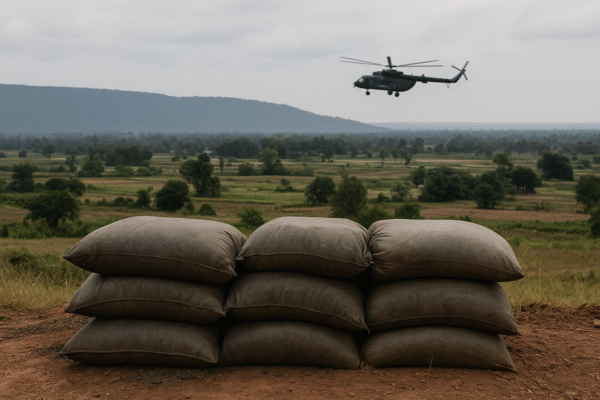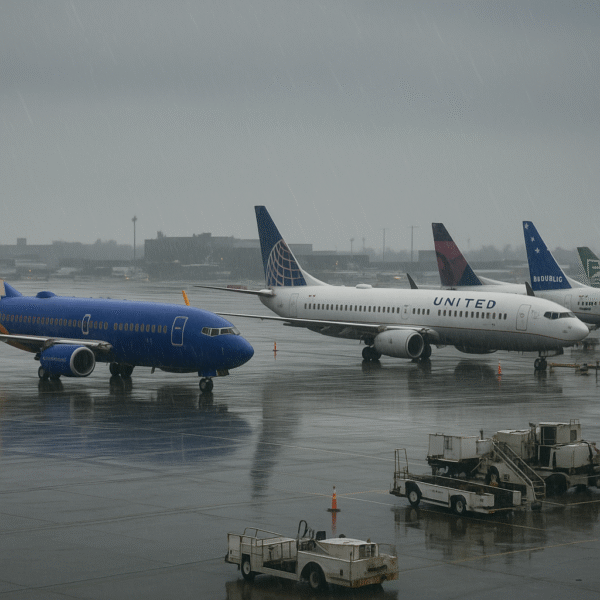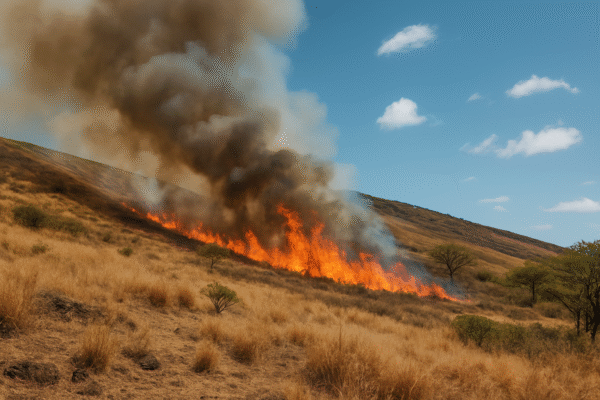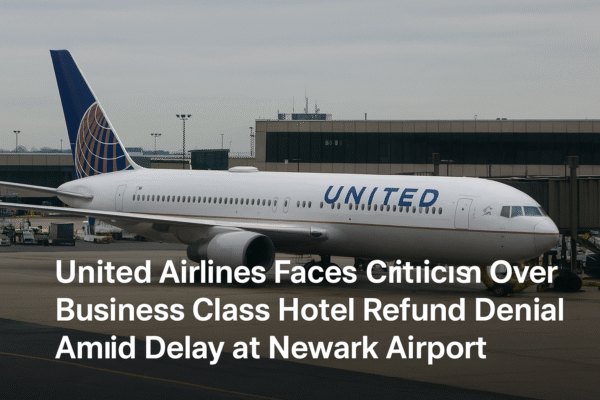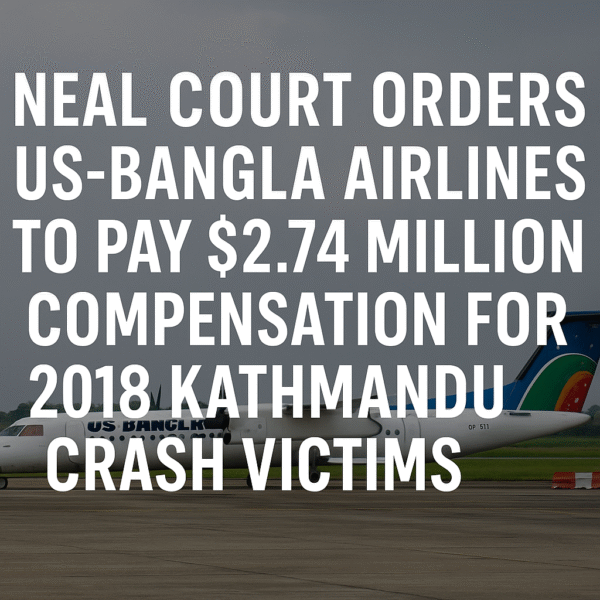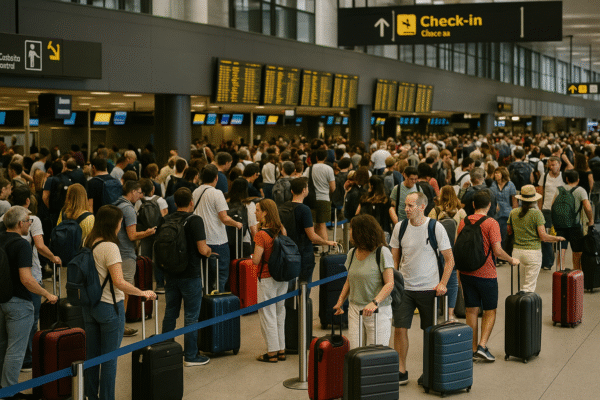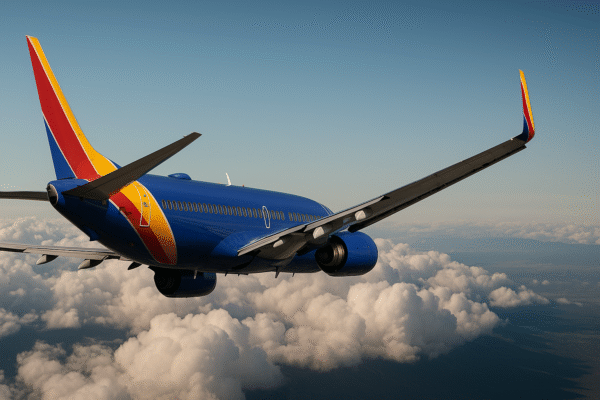Southwest Airlines Flight WN 1496 Makes Emergency Dive After TCAS Alerts to Prevent Mid-Air Collision
A routine Southwest Airlines flight from Burbank (BUR) to Las Vegas (LAS) turned into a heart-stopping ordeal on July 25 when Flight WN 1496 was forced to execute an emergency descent due to two back-to-back TCAS (Traffic Collision Avoidance System) alerts. The incident, which occurred shortly after takeoff, prompted an immediate response by the cockpit crew to prevent a potentially catastrophic mid-air collision.
According to eyewitness accounts and official airline statements, passengers aboard the Boeing 737 experienced what they described as a “violent” and “terrifying” dive. Although no passengers were physically injured, two flight attendants suffered head injuries during the sudden maneuver and were treated upon arrival in Las Vegas.
Emergency Response Triggered by TCAS Alerts
Shortly after departing from Burbank Airport in Southern California, the flight’s TCAS system issued two urgent advisories. The first alert instructed the pilots to climb to a higher altitude, followed by a second, more critical advisory directing them to immediately descend. The sharp sequence of conflicting instructions was a result of the aircraft detecting another plane dangerously close within controlled airspace.
Southwest Airlines confirmed that the cockpit crew adhered strictly to TCAS protocols, swiftly executing the complex climb-then-dive maneuver to ensure aircraft separation. TCAS systems are automated safety tools mandated by the FAA for all commercial aircraft carrying more than 30 passengers. These systems monitor airspace for potential traffic conflicts and issue real-time, resolution-oriented guidance to flight crews.
Cabin Chaos and Crew Injuries
The abrupt descent caught passengers off guard. Many felt themselves lifted from their seats despite being buckled in, as the aircraft rapidly lost altitude. Screams filled the cabin, and two flight attendants, who were not seated at the time, were flung upward and struck the aircraft ceiling. Medical assistance was promptly rendered when the flight landed safely at Harry Reid International Airport in Las Vegas.
“Everyone started screaming. It felt like the plane dropped out of the sky,” one passenger told local media outlets. “I held onto the seat in front of me for dear life.”
Southwest Airlines has since confirmed that both injured crew members are recovering and thanked the pilots for their swift, professional response. The airline emphasized that safety protocols were followed precisely and that they are cooperating with the FAA’s review of the incident.
Clarifying Flight Number Confusion
Some initial passenger reports misidentified the flight as WN 1491. This discrepancy was likely due to last-minute scheduling changes or reporting errors amid the confusion. Southwest Airlines has clarified that the flight in question was indeed WN 1496, operating on a standard route between Burbank and Las Vegas.
TCAS: A Vital Line of Defense in Crowded Skies
The Traffic Collision Avoidance System is a key pillar of modern aviation safety. It acts independently of ground-based air traffic control and uses transponder signals to detect nearby aircraft, calculating relative speed and trajectory to issue either a Traffic Advisory (TA) or a Resolution Advisory (RA). In this case, the system issued two advisories in quick succession, guiding the pilots to perform evasive actions to maintain safe airspace separation.
TCAS II, the version installed on commercial aircraft like the Boeing 737, is designed to coordinate with the systems of nearby aircraft. This ensures that if both aircraft are TCAS-equipped, they execute opposite maneuvers—one climbs while the other descends—to avoid collision.
However, experts caution that while TCAS is a powerful safety tool, its success depends on both aircraft following the advisories immediately. Any delay in compliance or technical mismatch in systems can compromise its effectiveness.
Airspace Congestion and Previous Incidents
The skies over the Los Angeles Basin, one of the most congested airspaces in the United States, present unique challenges. Multiple aircraft operating in close proximity increase the likelihood of TCAS interventions, particularly during peak traffic hours.
This is not the first time a TCAS incident has rattled U.S. air travelers. In September 2024, a United Airlines flight from Newark to San Francisco was forced into a sharp descent over Wyoming after a TCAS alert. That event resulted in injuries to two passengers and reignited discussions around seatbelt safety, especially during cruising altitude.
FAA and Southwest Airlines Investigate
Following Friday’s incident, the FAA confirmed it is reviewing the flight data and pilot response. Preliminary indications suggest the crew responded appropriately and that the TCAS system operated as designed. The National Transportation Safety Board (NTSB) may also participate in the review depending on further findings.
Southwest Airlines issued a statement affirming its commitment to passenger safety and applauding the quick decision-making of the crew. “The actions of our flight crew prevented a far worse outcome,” the statement read.
Conclusion: A Wake-Up Call for Passengers and the Industry
The mid-air scare involving Flight WN 1496 underscores the importance of remaining vigilant in the air—even during short-haul domestic routes. Passengers are urged to remain buckled at all times and heed all cabin crew instructions. Meanwhile, aviation authorities continue to refine air traffic management in crowded corridors like Southern California.
Thanks to a well-maintained TCAS system and an alert flight crew, a potential tragedy was averted. Yet the incident serves as a sobering reminder that, in modern aviation, seconds matter—and technology, combined with human expertise, remains the first line of defense in keeping passengers safe.
For more travel news like this, keep reading Global Travel Wire





